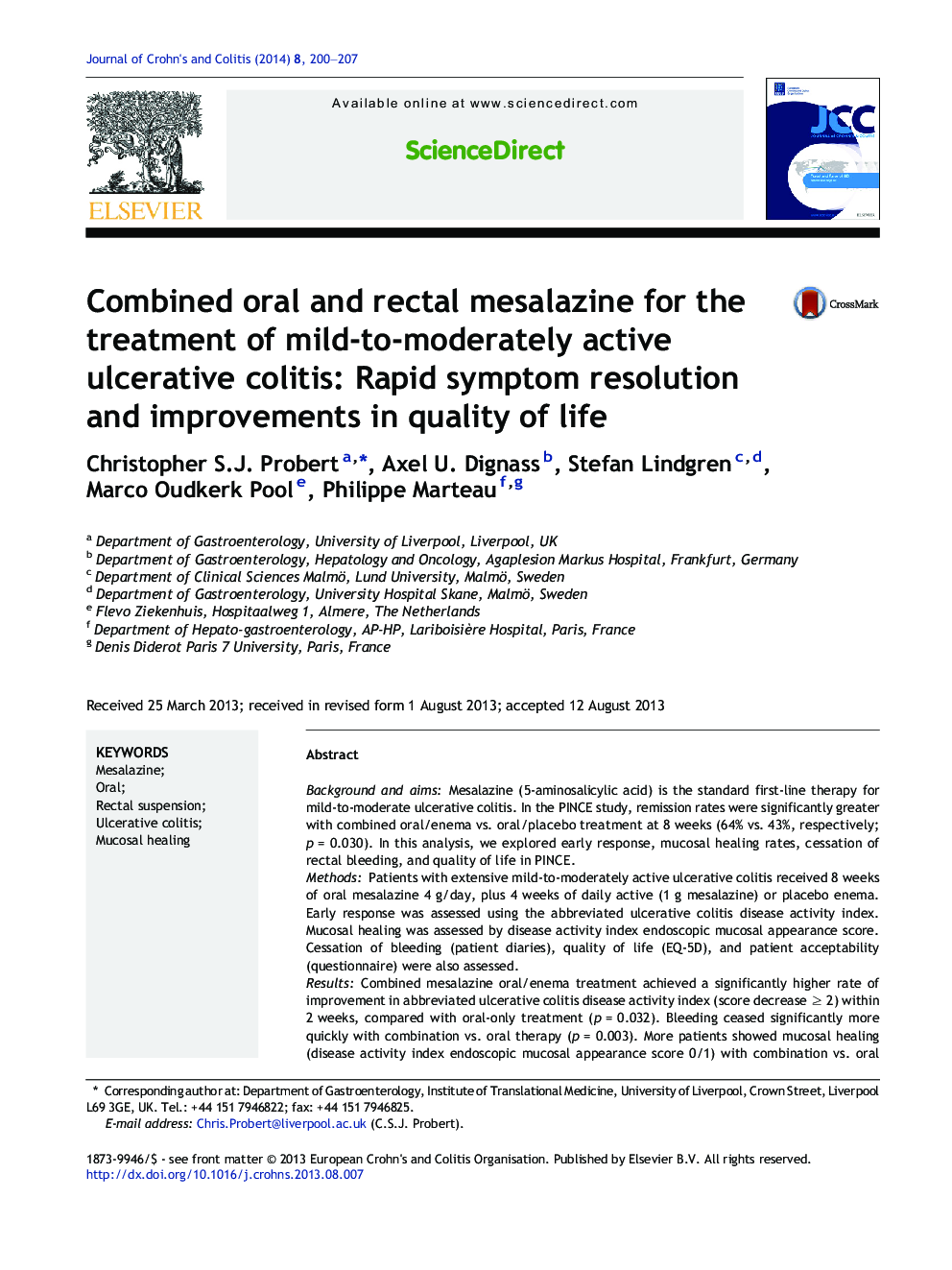| Article ID | Journal | Published Year | Pages | File Type |
|---|---|---|---|---|
| 6099326 | Journal of Crohn's and Colitis | 2014 | 8 Pages |
Background and aimsMesalazine (5-aminosalicylic acid) is the standard first-line therapy for mild-to-moderate ulcerative colitis. In the PINCE study, remission rates were significantly greater with combined oral/enema vs. oral/placebo treatment at 8 weeks (64% vs. 43%, respectively; p = 0.030). In this analysis, we explored early response, mucosal healing rates, cessation of rectal bleeding, and quality of life in PINCE.MethodsPatients with extensive mild-to-moderately active ulcerative colitis received 8 weeks of oral mesalazine 4 g/day, plus 4 weeks of daily active (1 g mesalazine) or placebo enema. Early response was assessed using the abbreviated ulcerative colitis disease activity index. Mucosal healing was assessed by disease activity index endoscopic mucosal appearance score. Cessation of bleeding (patient diaries), quality of life (EQ-5D), and patient acceptability (questionnaire) were also assessed.ResultsCombined mesalazine oral/enema treatment achieved a significantly higher rate of improvement in abbreviated ulcerative colitis disease activity index (score decrease â¥Â 2) within 2 weeks, compared with oral-only treatment (p = 0.032). Bleeding ceased significantly more quickly with combination vs. oral therapy (p = 0.003). More patients showed mucosal healing (disease activity index endoscopic mucosal appearance score 0/1) with combination vs. oral therapy, which was significantly different between groups at week 4 (p = 0.052). Both groups showed quality of life improvements, with a significant benefit for combination vs. oral therapy at week 4 in multiple domains. Most patients reported finding the treatment acceptable.ConclusionsRapid cessation of symptoms was seen with combination therapy, which is particularly important to patients and may improve quality of life.
